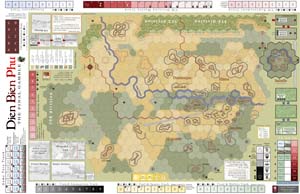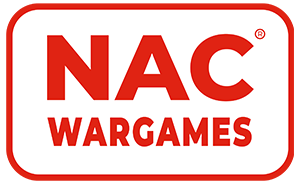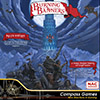Dien Bien Phu The Final Game 2nd Edition
"Dien Bien Phu" depicts the decisive battle which took place in a distant jungle valley in northern Vietnam. It was a battle where both sides knew from start would be a final showdown. The French were desperately seeking for an opportunity to bring the Viet Minh main battle force into battle on French terms. Dien Bien Phu was a trap where superior units and weapons would crush the Viet Minh onslaught. Viet Minh felt they could not win the war unless they managed to upgrade their mode of fighting into a full scale war. The French were too strong in the delta but in a distant valley they had gathered almost all their best units without whom France would lose their will to continue. Dien Bien Phu was the place where France would be dealt a crushing defeat.
It was a battle of preparation, assault and reaction. Viet Minh dug approaching trenches before assaulting the French strongpoints. The overwhelmed French defenders were forced to react by throwing reserve battalions into the pyre in order to save their position. The game will be fast and furious. The Viet Minh player will try to make the French defense collapse, and the French player will try to make the Viet Minh steam run dry and force them to stop.
 |
"Dien Bien Phu - The Final Gamble" is a two player game about the decisive battle of Dien Bien Phu in 1954 that not only ended the French Indochina war, but also had political repercussions far outside the region itself. One player represents France and her colonial troops. The other player represents the armed force of Viet Minh, the communist/nationalist independence movement of Vietnam. This is a cage fight. There are no victory points, there is no marginal victory and there is no draw. Viet Minh wins by forcing the French troops to surrender. France wins by not surrendering.
Map and scale: The map covers the former village of Dien Bien Phu and surrounding areas. There is a small sub map of the French strongpoint "Isabelle" further south in the valley. There are several groups of French strongpoints scattered around the map, each one with a female name (all named after the commander - de Castries� - mistresses, according to lore). The map is divided into three divisional sectors (plus a fourth one facing the sub map "Isabelle"). Each sector has several zones that that represent Viet Minh trenches winding from the map edge towards the center of the map. Each hex represents 150 meters and each game turn covers three days. There are 21 turns in the game, but historically, it ended after 19 game turns with a Viet Minh victory. The scale allows a stacking of three French units (usually infantry companies) in a hex, but there are no stacking limits for Viet Minh battalions, which creates a chess feeling.
Three Viet Minh battalions form a regiment and three regiments become a division and there were almost four full divisions in the valley, as well as a full artillery division off map. There was also an equivalent of another three divisions in a replacement pool outside the valley. The French troops were a colorful array of colonial paras, Vietnamese troops, units from French Algeria and Morocco, and, of course, the French Foreign Legion. Some units are of average quality, some are outright terrible, but some are the very best that could be mustered...anywhere. A French battalion consisted of four companies and there were 12 battalions together with 11 auxiliary light companies at the start of the siege, as well as 16 artillery and mortar batteries, and three tank platoons. Waiting in Hanoi were another five para battalions together with an expected replacement pool of about 14 companies. In neighboring Laos, there were four battalions ready to march and perhaps save the day at the very end.
French supply: This battle took place far out in the wilderness of Vietnam and both sides had to adjust to the limited flow of supplies that could be brought forward, though air to the French, and through vast forests to the Viet Minh. Supplies, as historically was the case, tend to be a lot less than wished for. There are several supply tracks on the map showing how much ammo, food & bullets, fuel & spares, medicine as well as the amount of truck transport available for the French. Each game turn air transports will bring in a mix of supplies together with replacements and reinforcements. This is done on a chart with a grid where a mix of supply markers are placed together with eventual reinforcements and replacements. Weather will then decide what will arrive and what will abort back to Hanoi. The French player will never know for sure what and how much will arrive and has to take that into account.
Viet Minh supply and morale: Viet Minh will receive a more steady flow of ammunition, but not enough to barrage whenever wished. There is a large pool of replacements to use, but although it is large, it is not infinite. If Viet Minh losses are too heavy, then the fact that you can only replace one step per regiment per game turn will be a painful experience. If loses are too heavy for too long, then the pool will dry out. Viet Minh�s main concern is troop morale. The battle force starts with excellent morale, but each division�s morale will decrease when taking replacements thus diluting the experienced veterans with newly drafted peasants with no combat experience. Morale will rise slightly when resting (not assaulting). But then again, time flies and there is a battle to win. Morale is a very important part of the game and if it falls too low, the troops will be rendered useless.
Artillery: Artillery is another important aspect in the battle. There are barrages from both sides before assaults commence. You wish to achieve two things with barrage: Losses, and to make the target shaken. Targets that are shaken lose abilities to react and support combat, and they become easier to assault. Defending units bring in barrage to make it harder for the attacker to succeed. Both sides, of course, bring in barrage in order to inflict as many casualties as possible before clashing in combat. Viet Minh artillery is off board and safe from counter barrage fire (mainly that they were dug deep into the mountain sides). French artillery and mortar units, on the other hand, exist as units on the board and may fall prey to Viet Minh counter barrage fire. French artillery units that are reduced and/or shaken are not as efficient, and those that are eliminated are...well, destroyed and out of play. Both sides have a limited amount of ammunition so spend it wisely.
Combat: The main effort in the game is, of course, the assaults. Each player will conduct two die rolls during the course of an assault to determine the outcome. The defender first conducts defensive fire in the hopes of inflicting losses, but also to possibly force the attacker abort the assault. The defender�s first die roll is compared to their strength and will show how well they defend (as a positive or negative modifier to the second die roll). The defender�s second die roll (modified from the result of the first die roll, and defensive barrage), is compared to the assaulting unit�s morale and will determine the result of the defensive fire. Providing the assaulting units do not abort, the attacker (who has suffered the effects of the defensive fire) conducts two die rolls. The attacker�s first die roll is compared to their strength to see how well the assault is conducted (as a positive or negative modifier to the second die roll). The attacker�s second die roll (modified from the result of the first die roll, and if the defender is shaken), is compared to the defender�s morale to see the outcome of the assault. Other modifications, such as trenches, terrain, support from other units, etc., adjust the strength of a unit and make it stronger or weaker to compare against for the player�s first die rolls.
So, even though many strength modifiers might be in your favor when you make the first roll, you will never know for sure what that result will be and therefore you will never know for sure if the second roll will suffer a positive or negative modification. Through this, a strong attack may go sour but a weak one may heroically succeed. By rolling two times, you won�t be able to quickly calculate your chances with a glance at a single table. You will know what your chances of success should be but you have that damn barrage that may spoil the best laid plans, plus you won�t know if your troops will crumble or stand strong against the incoming fire.
Dien Bien Phu � The Final Gamble, will be as tense and brutal a simulation as was the historical battle that determined the fate of a war as well as shaping the events of things to come.

 Comprando este juego podrás ganar OcaPoints.
Comprando este juego podrás ganar OcaPoints. 





























